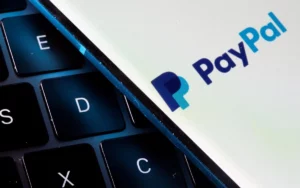
Silent Breach Exposes 16 Billion Passwords: 5 Things You Must Do Now
A staggering 16 billion passwords were exposed in a silent, decentralized breach compiled from years of malware activity – an unseen cyber threat now looming over governments and tech giants alike. This unprecedented leak eclipses almost every known hack to date. Yet, most people have never heard about it.
What happened: A global credential time bomb
On June 26, researchers at Cybernews revealed that they had discovered 30 unsecured datasets containing over 16 billion records. These were not theoretical vulnerabilities; instead, the data showed a string of website URLs, usernames and passwords scraped from infected machines over time.
The data included everything from private citizen logins to accounts tied to government domains, including Facebook, Telegram, Instagram, PayPal, Discord, Roblox – no platform seemed untouched. The data was formatted exactly as infostealer malware delivers it: a combination of old and new credentials. Much of the leaked content appeared to come from previously compromised password dumps.
Why this leak hasn’t made headlines
Despite its unprecedented scale, this breach has flown under the radar, unlike the United Natural Foods hack, which triggered widespread media coverage. One reason is that no single company was directly compromised; there was no named victim, no regulatory filing and no incident response to point to. However, it’s not just about a single company failing – everyone failed.
This breach highlights how unprepared the world remains to stop infostealer malware. It is the byproduct of years of careless digital hygiene, cybercriminal harvesting and the steady drip of malware-infected machines feeding stolen credentials into dark web markets.
Immediate actions for individuals:
1. Change your passwords across all platforms: Start with your primary email, banking, and social media accounts. If you use the same password in multiple places, change every one of them. Password reuse is the single biggest vulnerability exploited in these kinds of leaks.
2. Use unique passwords for every service: One password per account. No exceptions. This ensures that if one login is compromised, the rest remain safe.
3. Enable multi-factor authentication (MFA) on every account that allows it: MFA is no longer optional. Even a simple text message code can stop an attacker with your password.
4. Scan your devices for malware, especially infostealers: This data did not appear out of nowhere. It was harvested from infected machines. If you have not scanned your device recently, or if you have never run anti-malware software, now is the time.
5. Monitor account activity for unauthorized access: Watch for unfamiliar logins, password reset attempts, or new devices on your accounts. Most services provide tools to review recent activity. Use them. Set up alerts for suspicious behavior. If anything looks off, change your credentials immediately.
Immediate actions for businesses and IT leaders:
1. Deploy Endpoint Detection and Response (EDR) tools: Infostealer malware thrives on unmanaged or poorly protected endpoints. EDR tools allow your security team to detect, isolate, and remediate these threats in real-time before they cause widespread damage.
2. Enforce password managers and centralized identity platforms: Encourage or mandate the use of enterprise-grade password managers. Combine that with Single Sign-On and identity federation to reduce the number of credentials employees must manage and attackers can steal.
3. Conduct ongoing employee security training: One-time training is not enough. Phishing and credential theft are constantly evolving. Organizations need to build a culture of cybersecurity awareness that reinforces good behavior, simulates attacks, and rewards vigilance.
4. Implement real-time credential leak monitoring and dark web scanning: Do not wait for a breach notification. Be proactive. Invest in services that scan known dark web marketplaces and data dumps for your domains, employee emails, and customer credentials. When a match is found, move fast to rotate access and contain the risk.
5. Apply Access Controls Based on Risk, Not Convenience: Implement role-based access and least privilege policies. Restrict administrative access to only those who absolutely need it. Too many organizations default to broad permissions, giving attackers more room to move once they are inside.
Aligning access with actual job function reduces the blast radius when credentials are compromised.
In conclusion, this breach serves as a wake-up call for everyone involved in cybersecurity.
Source: www.forbes.com


